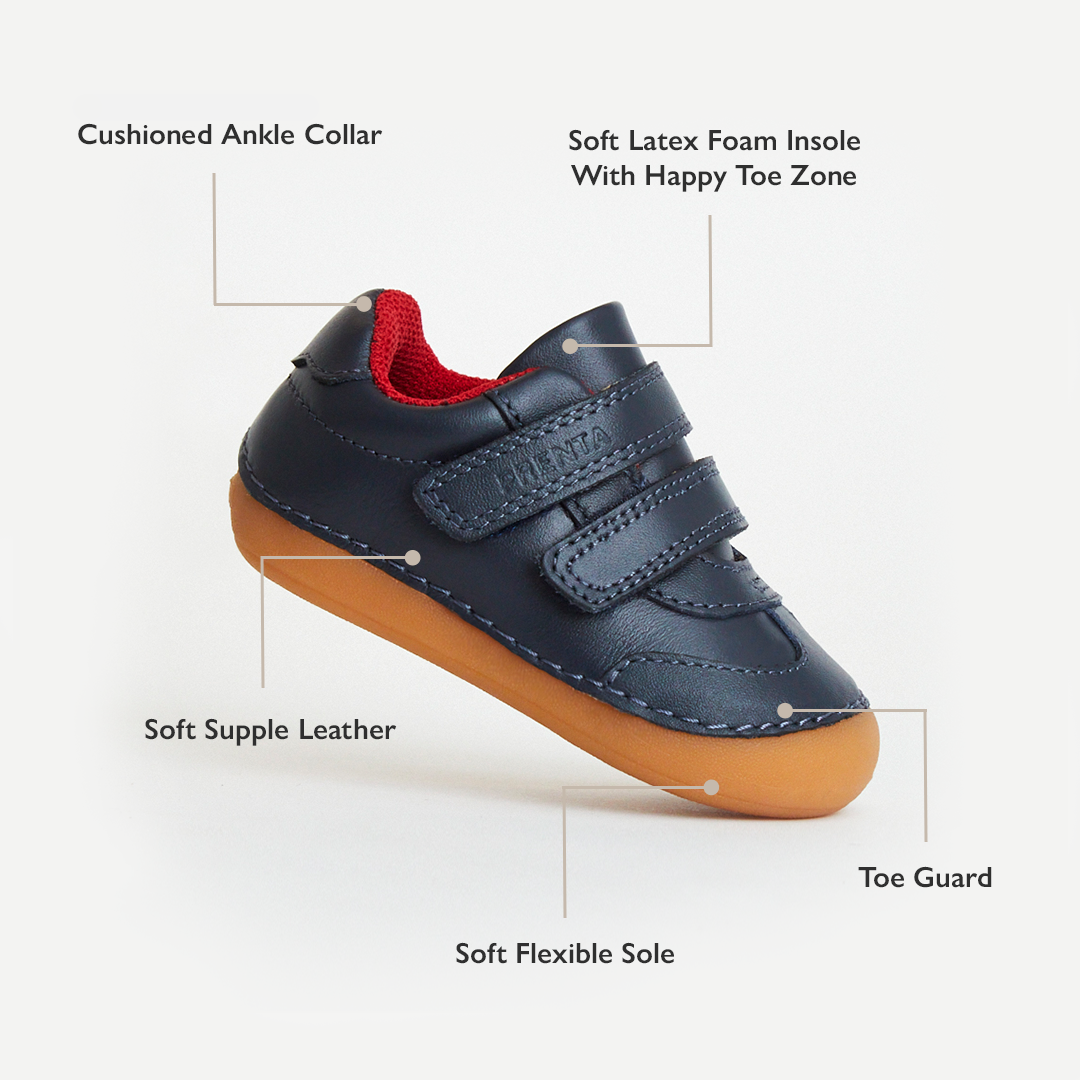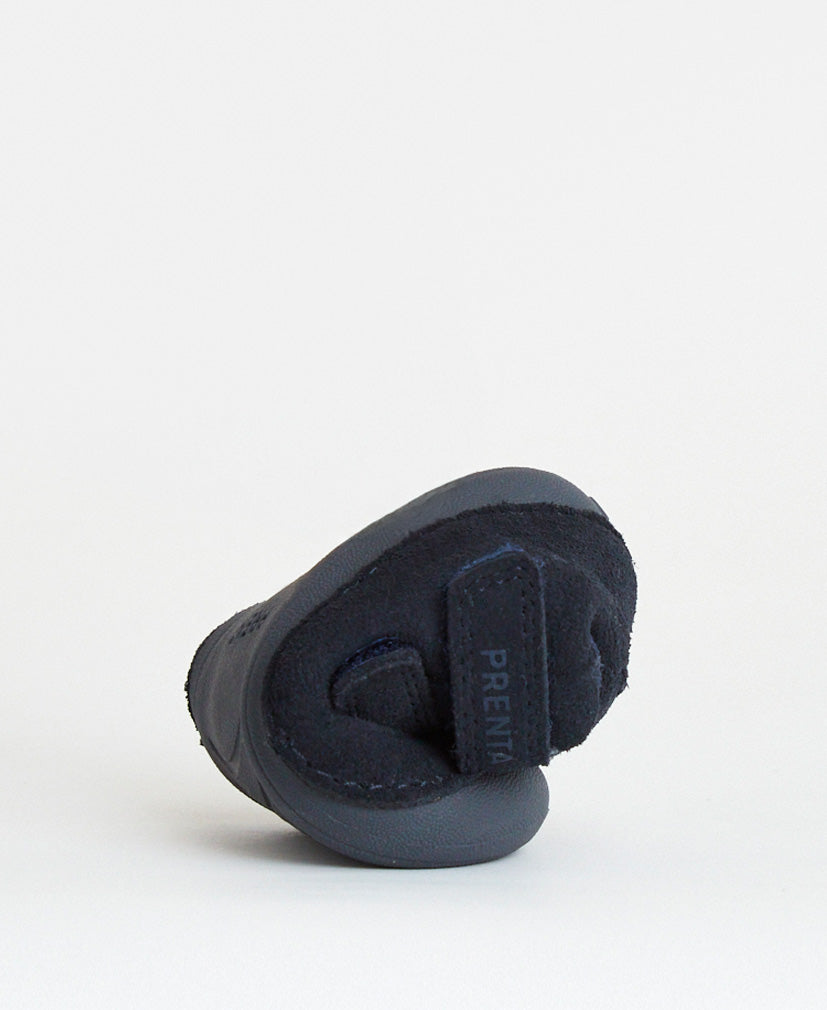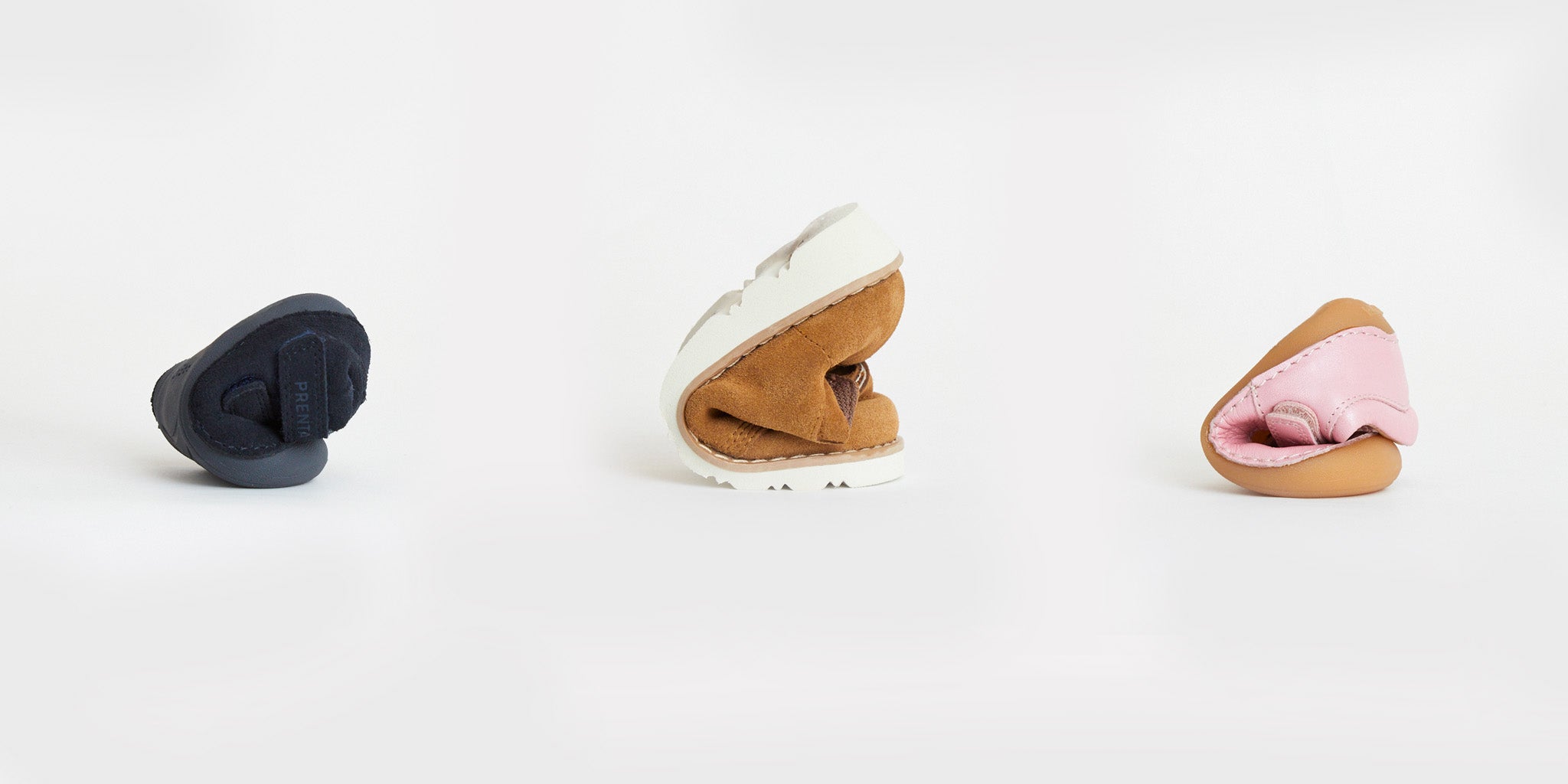FOOT HEALTH
At PRENTA, we prioritise your children’s health and happiness by offering footwear that supports foot development.
Our top priority is understanding foot development and what features in a shoe complement this.
Here is a guide to help you understand children’s foot health and choose the right footwear for them.
EXPERT ADVICE FROM OUR CERTIFIED PODIATRIST
A respected podiatrist and university doctor, emphasises the importance of specific shoe features for good foot health.
These include cushioned insoles to provide comfort and support, but not so thick that they restrict foot movement, and thick outsoles for durability and protection from impacts.
At PRENTA, our shoes incorporate these crucial features to support your child’s foot health at every stage.

CHOOSING THE RIGHT SHOES
Children’s feet are not just smaller versions of adult feet; they have unique characteristics that require special attention when selecting footwear.
Here’s what to look for in different types of shoes:
Babies: Ensure clothing is roomy enough for free movement.
Pram Shoes: Use sparingly; knitted bootees are better for keeping feet warm.
Early Walkers: Choose shoes that are comfortable, supportive, and properly fitted.
School Shoes: Ensure a good fit that supports development and allows toe movement; heels should be no more than 1.5 cm.
Plimsolls: Suitable for PE only, as they often lack sufficient support for extended wear.

PRENTA’S COMMITMENT
At PRENTA, our shoes are designed by leading footwear experts using premium materials to support healthy foot development.
Our footwear features rounded toes for growth, a wider fit for comfort, lightweight construction, ample space for the toes, removable insoles that can be changed if needed, and padded, breathable soles for all-day comfort. All of these features ensure your child’s feet are well-supported and ready for their next adventure.


FOOT HEALTH TIPS
Ensuring proper foot health from an early age is essential for your child’s development.
Here are some tips to keep in mind:
Before Walking: Ensure clothing isn’t too tight around feet and encourage leg kicking to build strength.
First Steps: Allow barefoot walking indoors to strengthen feet; choose first shoes with soft leather uppers, flexible soles and a snug fit.

COMMON FOOT CONDITIONS
Many foot conditions in children are normal and self-correcting.
Overlapping or curly toes usually correct themselves with walking. Bow legs are typical until about 18 months, while toe walking and in toeing (pigeon toe) generally resolve as children grow.
Out-toeing and knock knees also tend to self-correct over time, with knock knees typically resolving by 6 years of age. Flat feet are common and usually improve by age 6, especially if an arch is visible when the child stands on tiptoes.
If any condition persists or causes concern, consulting a healthcare professional is advised.





